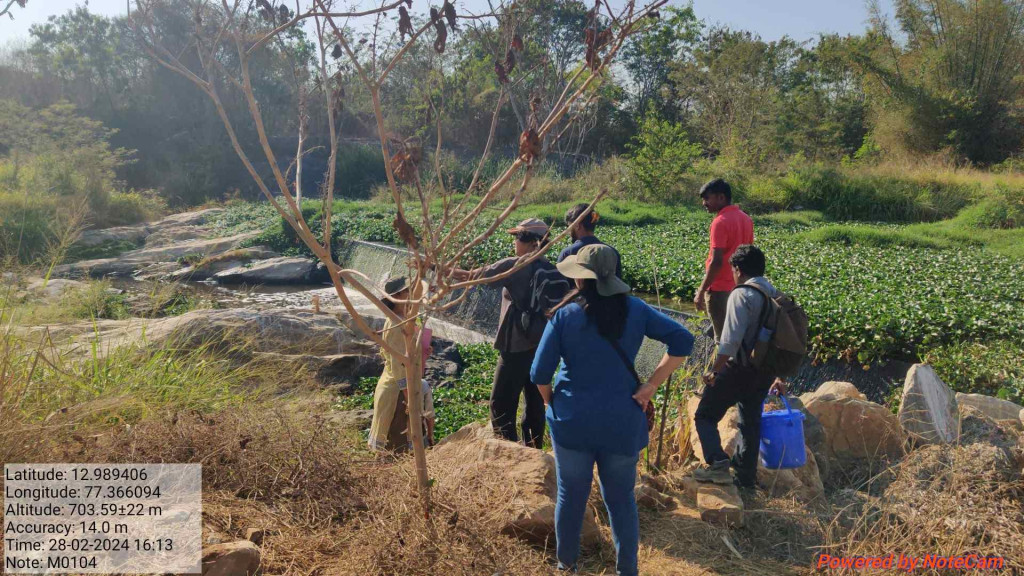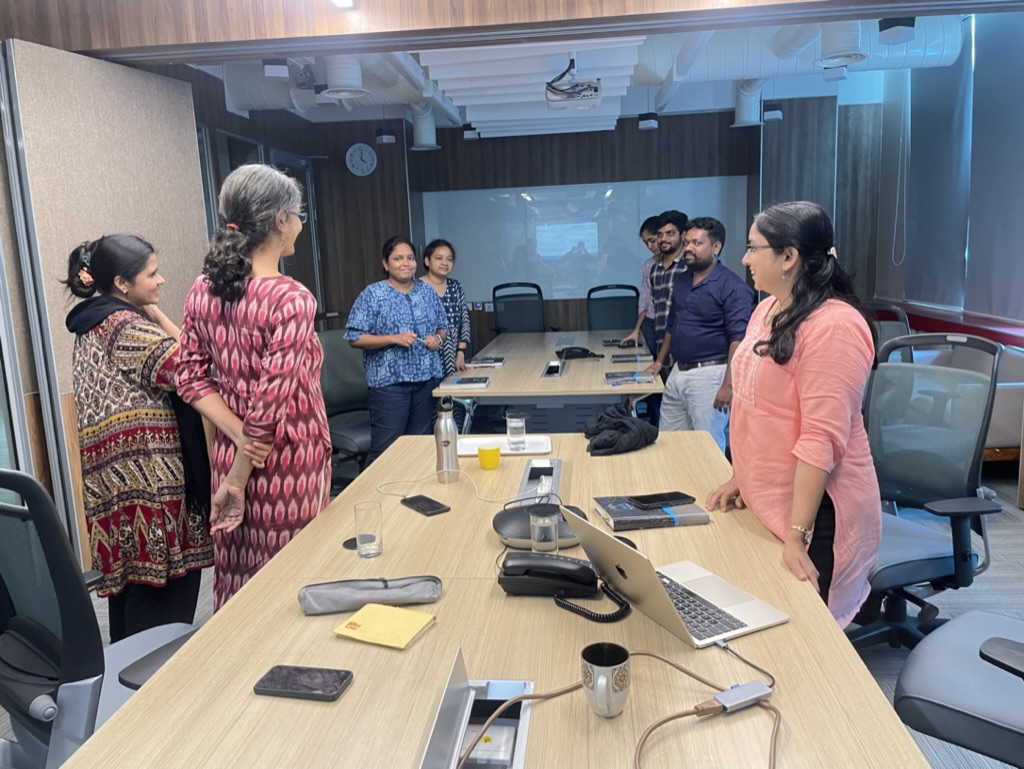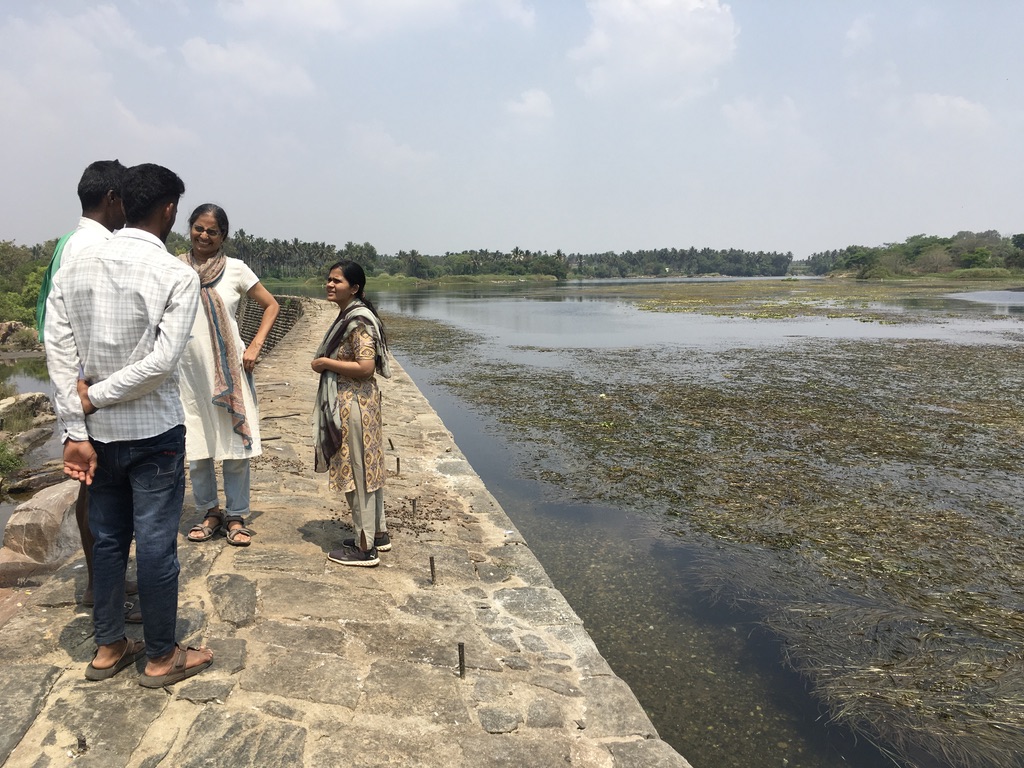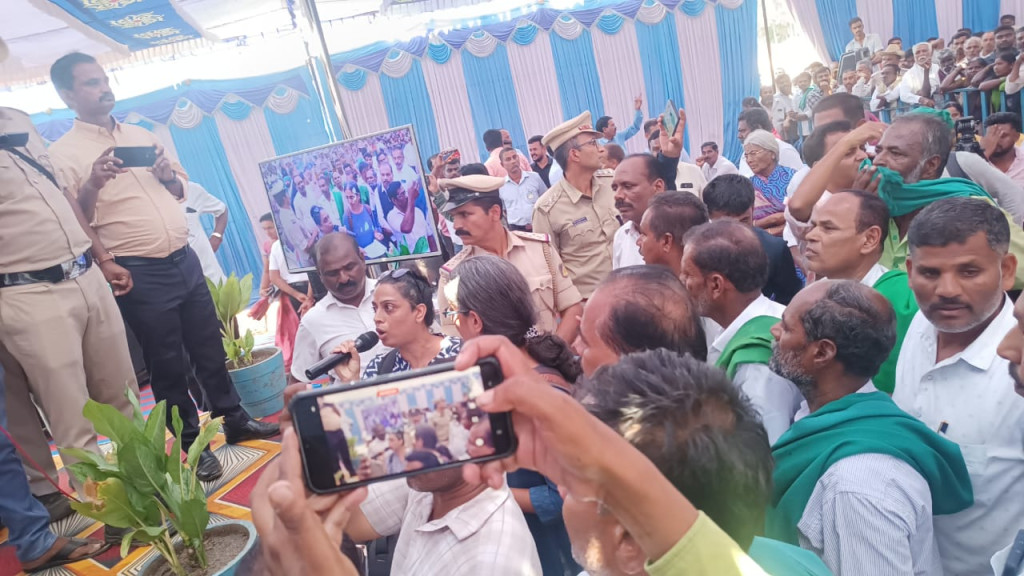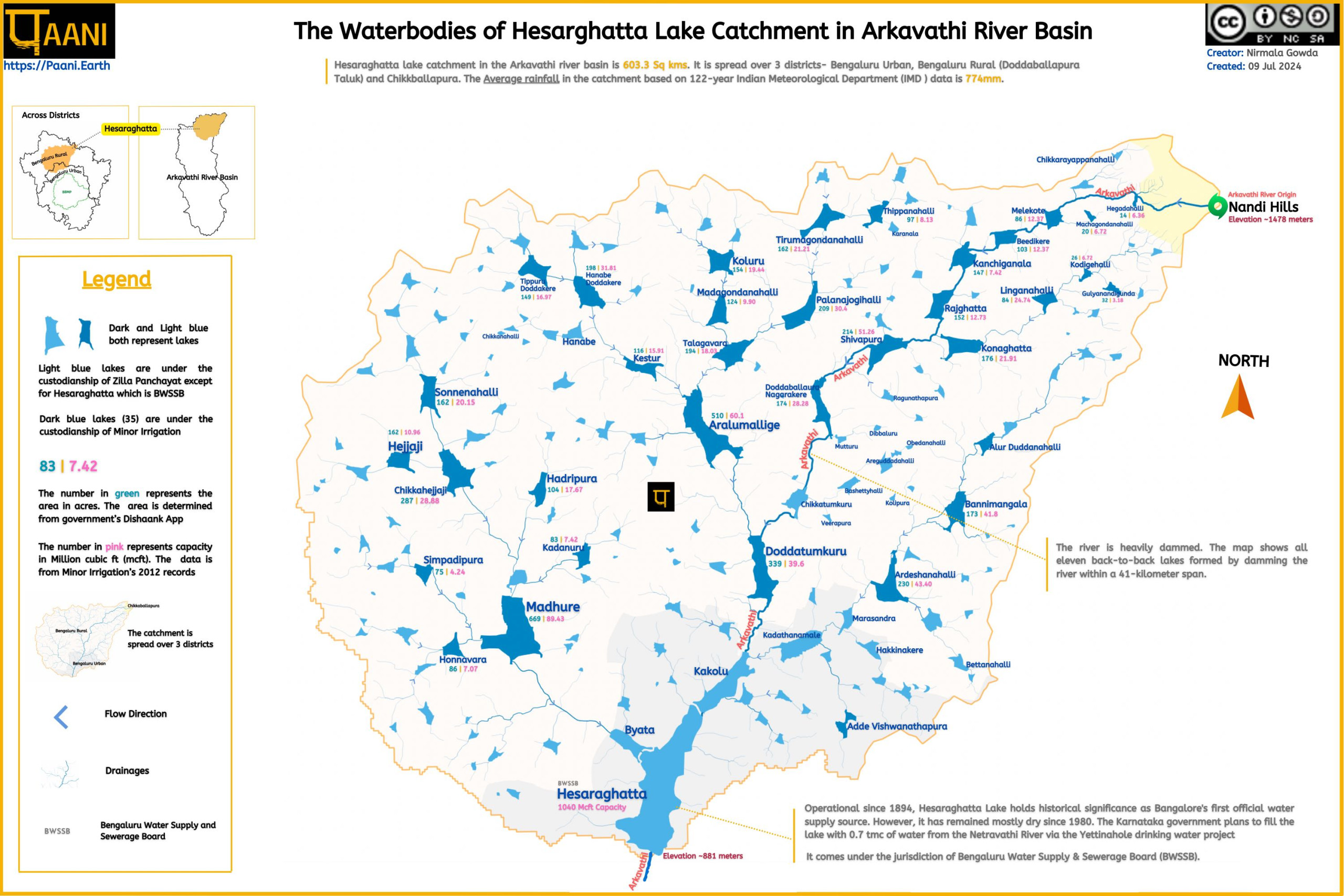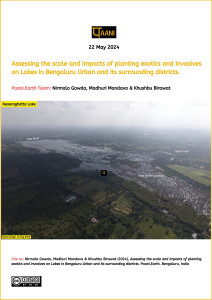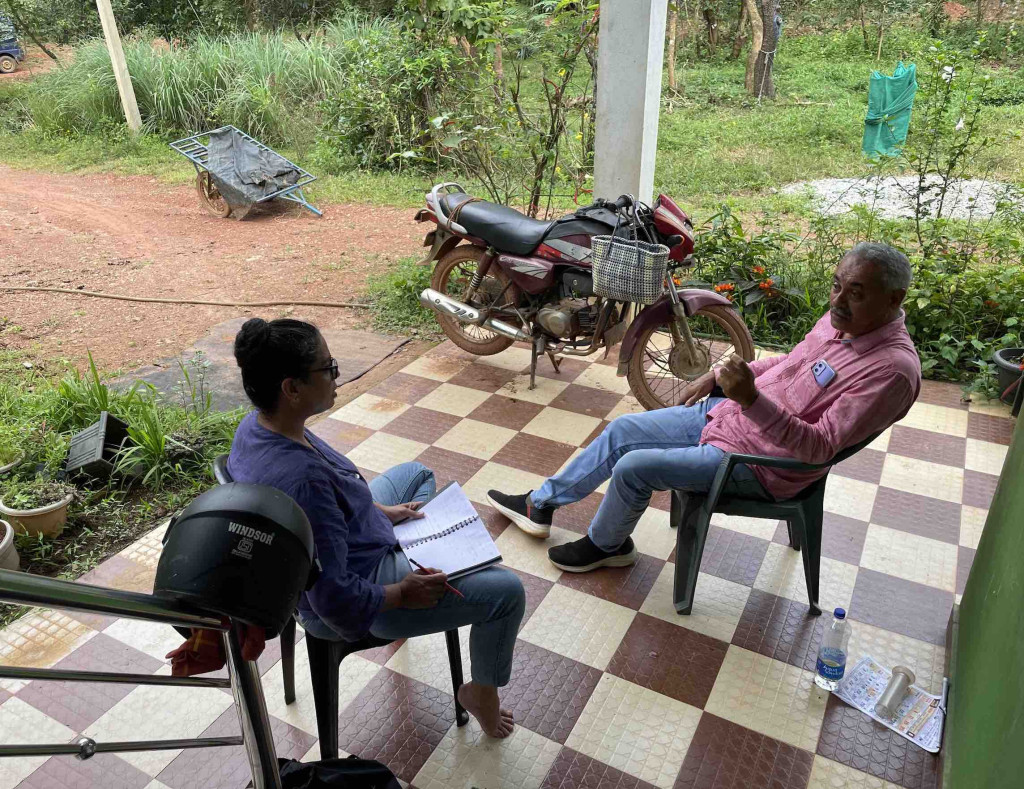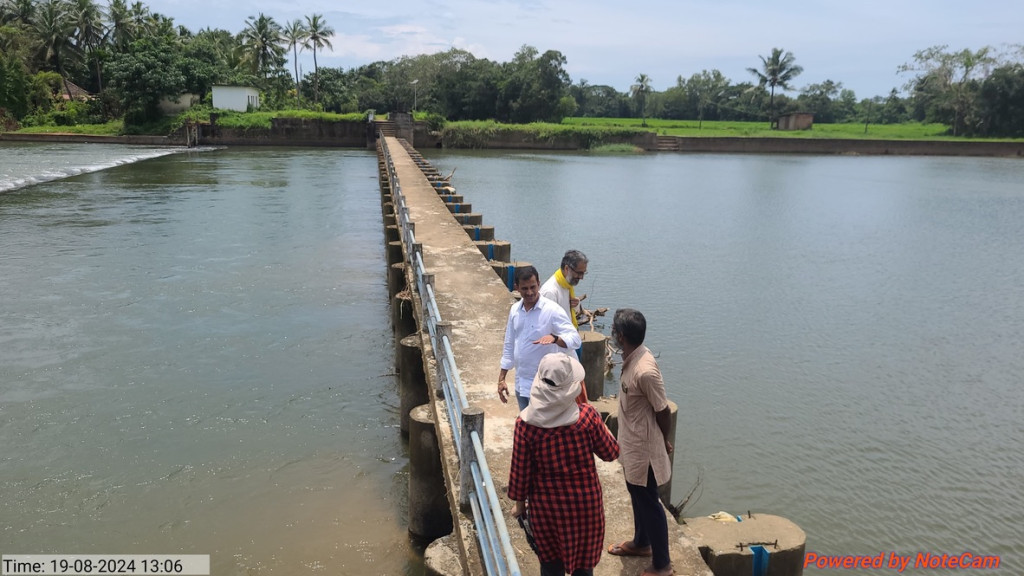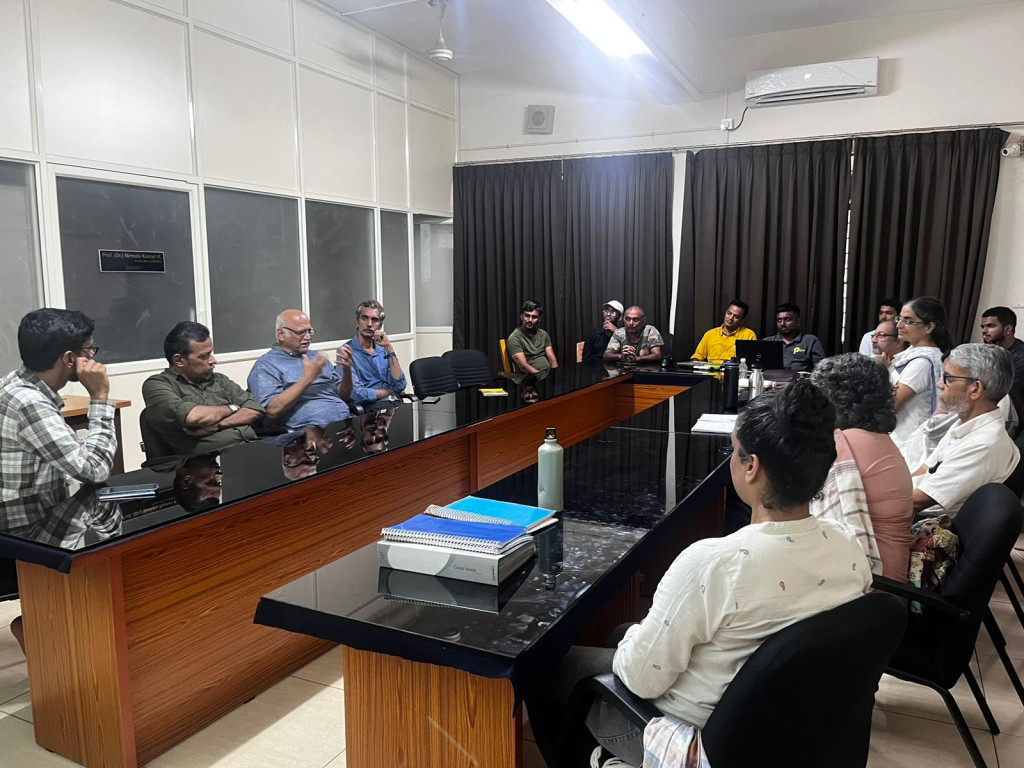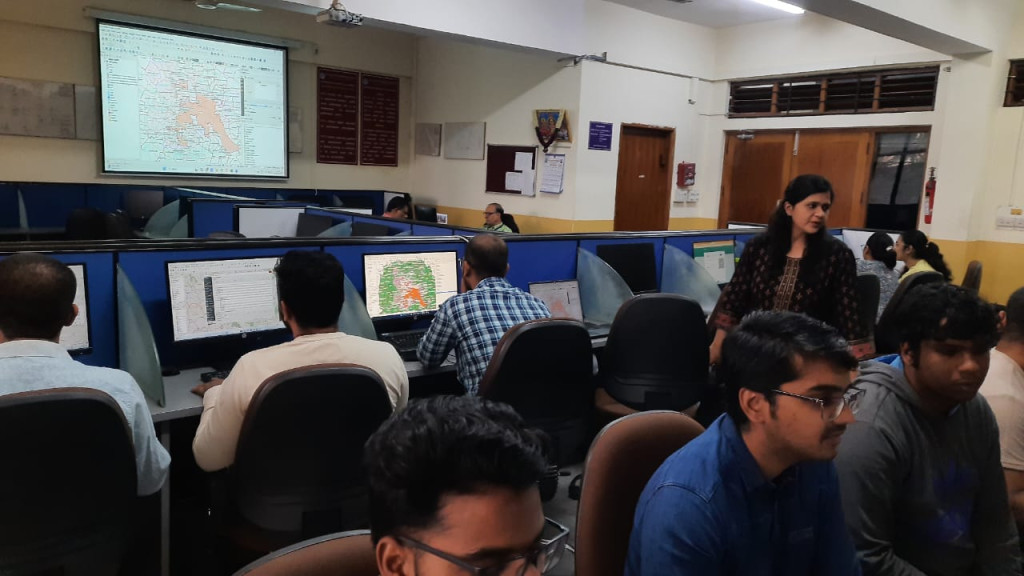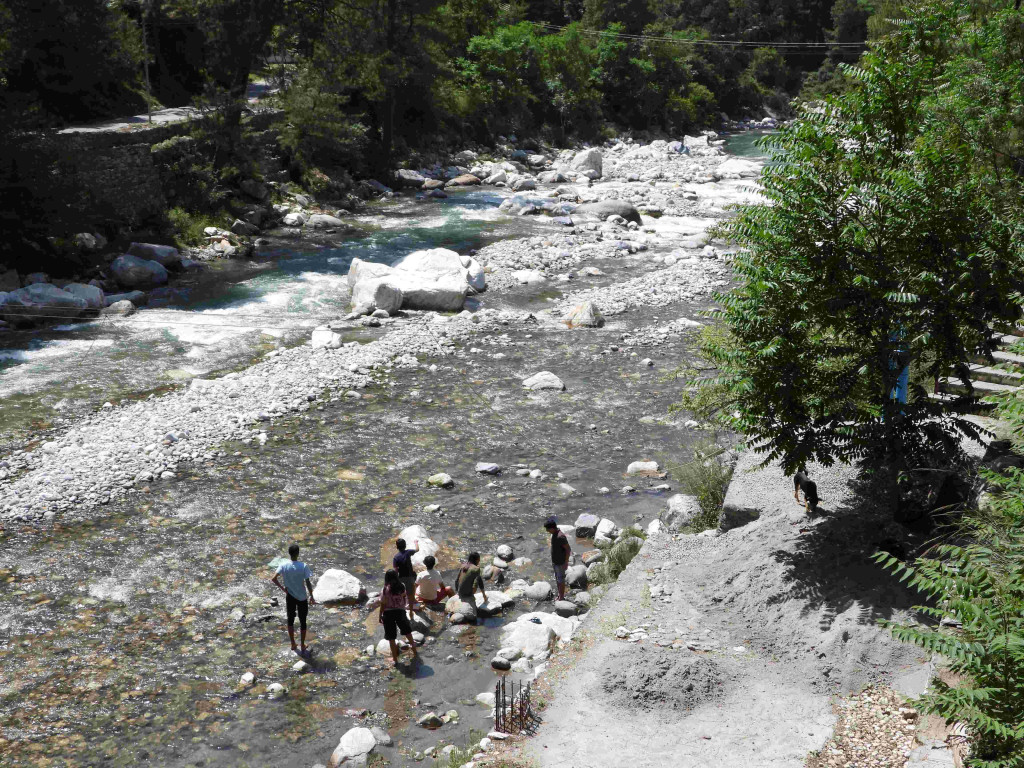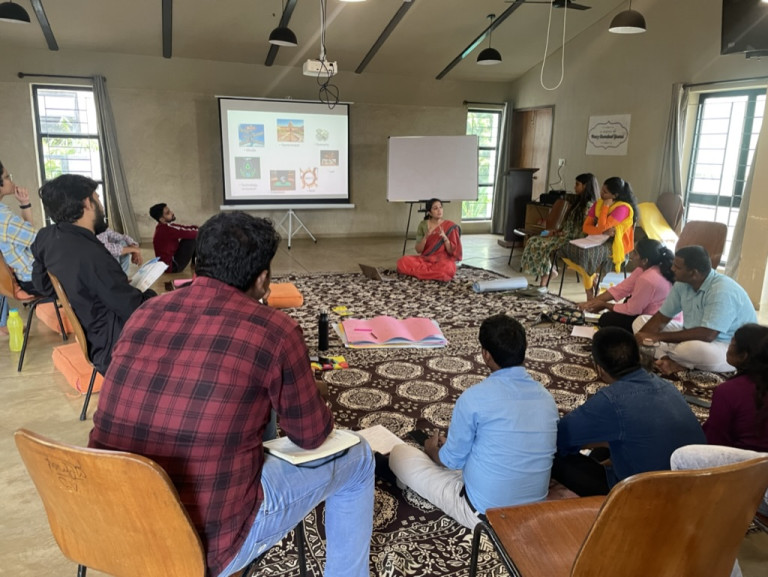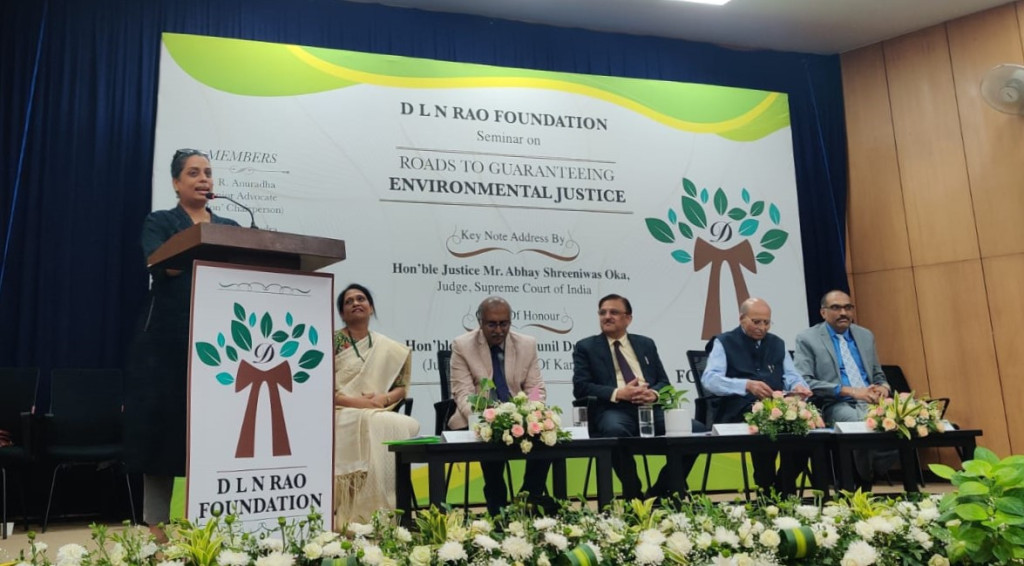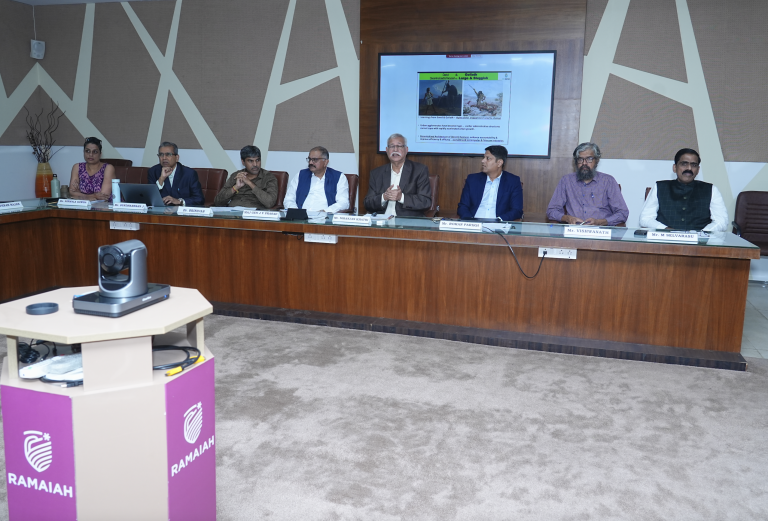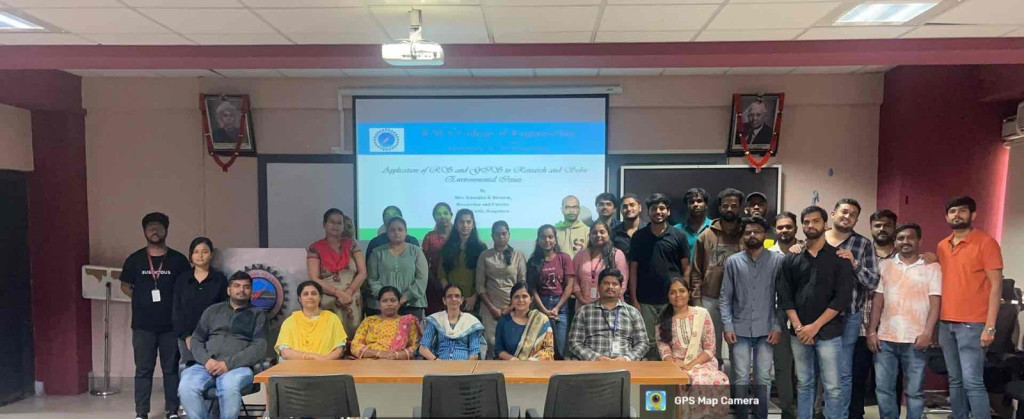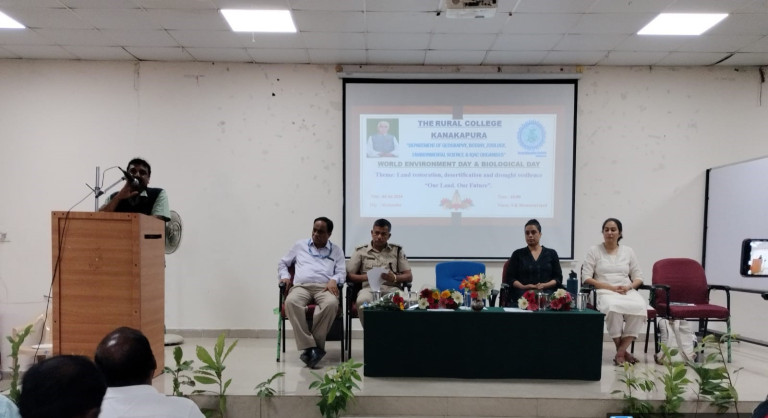THE SECOND LETTER
Updated Date: 05 Sep 2024
This is our first letter of 2024. We have been so busy that our communication has lagged. We have been in the thick of many things that came our way. Here is a quick summary of what we have been doing this past year.
But first, we want to invite you all to the event that Paani.earth is hosting along with Bangalore International Centre (BIC) on Saturday the 14th of September “Rivers & People: A Disconnect in Times of Scarcity”. We hope to see you there! Please RSVP using this link.
Study: Chemical contamination in Arkavathi River
The year began with an opportunity to study the chemical contamination of the Arkavathi River’s water and sediments. In collaboration with the International Centre for Clean Water (ICCW) under IIT Madras, we analyzed samples from seven locations along the Arkavathi River in March. This project, our first primary dataset on water and sediment quality, involved learning about sediment samplers, sampling process, analysis methods, delving deep into the chemistry of various contaminants, environmental fate of contaminants, and much more.
The findings were alarming, revealing high levels of nitrogen, phosphorus, arsenic, cadmium, mercury, and hexavalent chromium. Unexpectedly, lithium was also detected in the sediment. Water analysis further uncovered the presence of chemicals and pesticides, particularly in samples collected upstream of the Thippagondanahalli Reservoir. This raises concerns since the Thippagondanahalli reservoir is set to supply water to Bangalore once the Yettinahole project is operational. We are working towards bringing these concerns to BWSSB’s notice and address them.
While the analysis is complete, the report and an interactive dashboard are in the works.
This effort is being coordinated by Madhuri Mandava.
Note: With multiple projects coming our way, we recognized the need for a more structured approach. We now have coordinators for each project who will help streamline decision-making and enhance efficiency, while allowing the entire team to continue contributing in meaningful ways.
We also have support from several interns and volunteers, who add immense value to our efforts.
Flow Measurement
Partnering with CDDIndia, we measured the flow of the Arkavathi River upstream of Thippagondanahalli Reservoir and Vrishabhavathi River, just before it exits BBMP. The flow was measured every two hours over 24 hours in March, to understand how much wastewater flows in these urban rivers. Vrishabhavathi river flow was 541 Million Litres per Day (MLD). Arkavathi river flow was 163 MLD. The details of the study will be updated on the website shortly.
This effort is being coordinated by Madhuri Mandava.

Sugarcane-based Ethanol Blended Petrol
Converting Cauvery River water into fuel within the water-stressed Cauvery Basin
In response to concerns from Mandya citizens, we, along with the Human Rights Protection Foundation (HRPF), Udupi, began investigating pollution issues around Coromandel Sugars in K.R. Pete Taluk, Mandya District. The factory is seeking environmental clearance to set up a 150 KLPD ethanol plant produced from sugarcane, raising concerns among citizens that the toxic effluents, known as spent wash, from the ethanol distillery will be mismanaged and add to the existing environmental burden caused by the industry.
The industry has caused significant problems in the past including a severe fly ash issue from coal & bagasse-fired cogeneration plant, which the citizens successfully addressed by taking the matter to the National Green Tribunal (NGT). They also managed to stop the factory’s previous attempts to establish an ethanol distillery. Now, with the industry seeking to expand again, the citizens are deeply concerned.
We attended and voiced our concerns at the public hearing held in Mandya at Coromandel Sugars in support of the citizens. After thoroughly analyzing the Draft Environment Impact Assessment (EIA) and Environment Management Plan (EMP), we identified serious flaws in the assessment process.
Since the draft EIA was provided in English, with only the executive summary in Kannada, it needed our critical intervention to conduct a detailed analysis of the gaps. This involved long meetings with locals to translate the EIA and gather their inputs, as the Kannada summary omitted crucial details, depriving them of the necessary information to effectively raise their concerns.
We had several meetings with local citizens of Mandya in K.R. Pete. We also had meetings in Udupi with Dr. Ravindranath Shanbhag, Udupi Human Rights Foundation to put together a comprehensive letter outlining the objections to the Ministry of Environment and Forests (MOEF) and Executive Appraisal Committee (EAC).
In the EIA (English), we found highly inconsistent water balance figures, rendering water conservation, Zero Liquid Discharge (ZLD), and the wastewater treatment process impractical. Additionally, there is a severe deficit in the sugarcane feedstock—the primary raw material for the proposed expansion. The baseline monitoring, conducted off-season, was technically unsound and therefore of little value.
Moreover, the outdated water agreement of the year 2000 with the Water Resources Department provided Hemavathi River water at throwaway prices. The Hemavathi River basin is highly water-stressed, and such lapses reveal how little both the government and the industry value water, the industry’s main raw material. The draft also fails to mention the already existing downstream users who would be negatively impacted by the industry’s water withdrawal.
Crucially, there is no analysis of the Hemavathi River’s flow to determine if there is sufficient water for the industry. Our analysis of Central Water Commission data from the past eight years shows an unprecedented decline in river flows at Akkihebbal Station, with zero flows recorded during the summer months. This raises the critical question: Is there enough water for the industry to produce Ethanol?
Despite all the inconsistencies, discrepancies, and false claims, the approval is impending. Along with the citizens of Mandya and the Udupi Human Rights Foundation, Paani.Earth is ready to challenge the approval in NGT.
This effort is being coordinated by Madhuri Mandava and Udupi Human Rights Foundation.
All about Hesaraghatta Lake and its Catchment
Extensive research and analysis have been conducted on Hesaraghatta Lake and its catchment. Originally commissioned in 1895 to provide drinking water to Bengaluru, the lake no longer serves that purpose today. In recent decades, the degradation of the Hesaraghatta Lake catchment has worsened. To protect and conserve this vital area, we have collaborated with local stakeholders to make crucial data accessible to the public.
Everything related to the Hesaraghatta Lake and its catchment can be found on one page here. There is Hesaraghatta Lake catchment Map, Hesaraghatta Lake profile & Hesaraghatta Lake catchment land cover. Madhuri Mandava has analysed satellite images showing the loss of water spread in the catchment. The two articles related to this analysis are: Fragmentation of Open Water and Open Water Decline.
Khusbhu Birawat, has analysed 122 years of the Indian Meteorological Department’s rainfall data and the article can be found here. Aralumallige Lake, is one of the largest lakes of the Hesaraghatta Catchment. Doddaballapura Town’s drinking water supply borewell is on the lake and we have profiled it here. Koluru is another lake in the catchment. It has been lost completely to invasive trees. We have profiled it here.
This effort is being coordinated by Nirmala Gowda working with Chidanandamurthy of Yuva Sanchalana
Trees on Lake bed – Boon or Bane
We released a major report in May: ‘Assessing the scale and impacts of planting invasives on Lakes in Bengaluru Urban and its surrounding districts’. The name given to the report is daunting (we really don’t know why we gave such a daunting name), but it is simple & straightforward research on the impacts of trees on the lake. The report heading should have been ‘Trees in Lakebeds: Boon or bane?’, as Deccan Herald aptly put it.
Deccan Herald also did a documentary on this: Why does this lake in Bengaluru look like this? We also presented it at the WOW Action Forum.
This effort is being coordinated by Nirmala Gowda.
Lake Profiles
Information on the lakes of Bengaluru can be found in different government reports. But we felt the need for a single collated source with information on basic details of the lakes. Thus, working with the citizen lake stakeholders, we have been putting together lake profiles. Our latest: Puttenahalli lake, Hesaraghatta lake, Koluru Lake, Aralumalliage lake. You can check out all our lake profiles here.
This effort is being coordinated by Khushbu K. Birawat
Western Ghats
The Ministry of Environment, Forest, and Climate Change released the sixth draft notification on the Western Ghats Ecologically Sensitive Area on July 31, 2024, a day after the series of landslides hit Wayanad inviting public comments and suggestions. In response, Nirmala embarked on a nine-day study tour of the Western Ghats in Karnataka to gather insights and feedback from local citizens, environmentalists, activists, and business professionals. Her journey included visits to Mangaluru, Udupi, Mala (near Karkala), Thirthahalli, Sirisi, Sagara, and Shimoga.
Nirmala’s mission to understand the Western Ghats and its rivers began even before the sixth notification was published. Since June, she has been traveling across the river basins of the Western Ghats, visiting locations such as Karwar, Joida, Dandeli, Haliyal, Sakleshpur, Mudigere, Kottigehara, and Javali. This travel has provided her with first-hand knowledge of the local conditions affecting the Western Ghats and its rivers.
Madhuri and Khushbu have been compiling spatial data from publicly available reports to gain a spatial understanding of the Western Ghats. The team plans more study tours to gather firsthand knowledge, integrate suggestions from various reports with inputs from local groups and make critical information about the Western Ghats publicly accessible.
Our immediate focus is to send a detailed representation to MOEF with all the objections to the recent notification of the Environmental Sensitive Areas (ESAs) in Western Ghats. This effort is being coordinated by Nirmala Gowda.
Learning from Stalwart: Dr. Ravindranath Shanbhag
Dr. Ravindranath Shanbhag has been actively involved in human rights and environmental issues since the 1980s. During our visit to Udupi, we participated in a focused learning session on the methods and approaches employed by Dr. Shanbhag. He shared a presentation covering a range of environmental concerns he has worked on, including river pollution, mangrove conservation, Western Ghats protection, industrial pollution, and pesticide contamination. Dr. Shanbhag has been a key figure in the fight to ban endosulfan, a battle he continues to pursue in the National Green Tribunal (NGT).
Sharing our Geo-Spatial Knowledge
Our research leverages earth observation data and corresponding geo-spatial technologies to deepen our analysis and insights.
By staying current with geo-spatial technologies, we have been strengthening our capabilities in addressing complex environmental challenges.
As we continue to learn, we are also committed to sharing our geo-spatial knowledge with the public. Recently, Khushbu led a hands-on QGIS training engineering students at BMS College of Engineering, helping the next generation of engineers develop critical skills that can be applied for the environmental conservation and protection
River Tirthan
River Tirthan, a tributary of Beas in Kullu District of Himachal Pradesh. It is undammed, free flowing river. It has been declared as a “No-Go Valley” for hydropower or dam development.
Nidhi Paliwal is co-ordinating with the local stakeholders assisting them with geo-spatial data.
Events
Vivek Srinivasa sat down with Madhuri Mandava to talk about the work that Paani.Earth is doing. She talked about her journey to make data about rivers more accessible and how it plays a crucial role in decision-making whether in courts or policy.
You can find the podcast here.
Nirmala Gowda, got a rare opportunity to speak about the ‘Equitable distribution of water, wastewater and groundwater in Bengaluru and its surrounding areas’ in the presence of Supreme Court Justice Abhay A Oka and Hon’ble Karnataka High Court Justice Sunil Dutt Yadav.
The team participated in the CNSS roundtable highlighting data-driven solutions for climate resilience. Paani’s ideas on river conservation provide valuable perspectives on addressing climate challenges and shaping a sustainable future.
Khushbu Birawat got an opportunity to present a Guest lecture on “Application of Remote Sensing (RS) and GIS to Research and Understand Environmental Issues” at her Alma mater BMS College of Engineering.

RIVER BASIN

DAMS & FLOW

POLLUTION

GROUNDWATER

STRAWS

BIODIVERSITY

RAINFALL FLOODS & DROUGHT

RESTORATION



